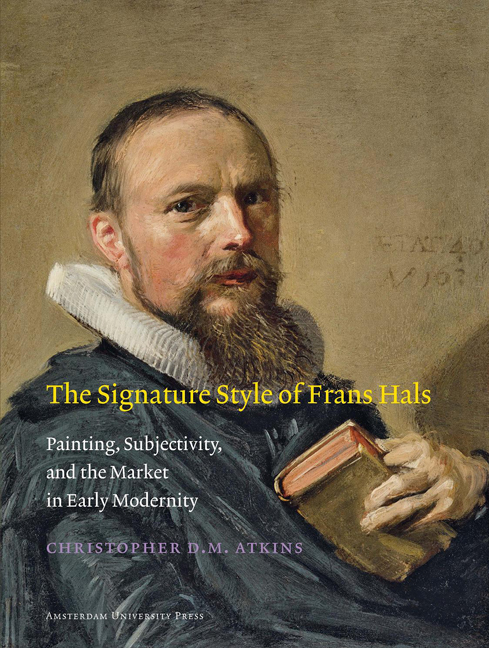Chapter 3 - Painting for the Market
Published online by Cambridge University Press: 14 January 2021
Summary
As Michael Baxandall has articulated, the economic environment within which both artists and their art operate affects the artists’ goals and their strategies for accomplishing those goals. Assuming purposefulness as Baxandall does, economic realities and actual mechanisms of exchange directly impact artists’ intentions, motivations, and actions, as each painter decides how to meet the charge presented by the market. As a result, analyses of the market and a painter's interactions with it are central to understanding the artist, his or her process, and the resulting artwork. To date, numerous studies have mapped features of the art markets and economic environment present in the Dutch Republic in the seventeenth century, but none – including Pieter Biesboer's study of those who sat for Frans Hals's portraits – have explored how Hals or his distinctive rough manner of paintings responded to, and possibly shaped, market forces in his local environment.
This chapter explores Hals's individualized virtuoso manner as it operated in the market of seventeenth-century Haarlem for which he worked almost exclusively. An analysis of the known sales venues in which Hals participated reveals that Hals first employed his rough manner in genre paintings exchanged in open market outlets. The first section of this chapter tests John Michael Montias's hypothesis that such painting methods constituted process innovations that decreased production time. Montias's theory partially explains Hals's initial utilization of a rough technique for genre paintings and suggests that market conditions may have prompted him to implement this approach. But it fails to account for the artistic sources from which Hals's manner derives and Hals's continued utilization of a painterly approach later in his career for commissioned portraits. Section two investigates how contemporary Flemish paintings of the highest quality may have inspired Hals. Emulating artists from the southern Netherlands helped Hals tap into additional segments of the local market by attracting clients who possessed a preexisting taste for high-end Flemish painting and the sketchy aesthetic associated with it. This move enabled him to craft a market identity as a fashionable painter. The final section of this chapter examines how, as the market evolved into one that placed an increasing premium on attributions and individuality of execution, Hals employed his rough manner as a signature style, a non-verbal means of expressing his authorship.
- Type
- Chapter
- Information
- Signature Style of Frans HalsPainting, Subjectivity, and the Market in Early Modernity, pp. 117 - 158Publisher: Amsterdam University PressPrint publication year: 2012



